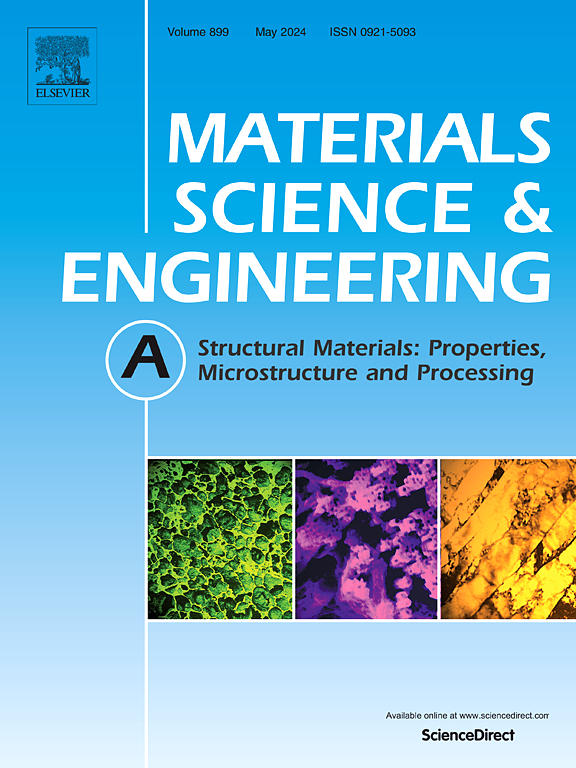通过层状异质结构形成的高强度韧性耐热Mg-Gd-Y合金
IF 6.1
2区 材料科学
Q1 MATERIALS SCIENCE, MULTIDISCIPLINARY
引用次数: 0
摘要
在高温下提高轻金属合金的抗拉强度往往会损害室温(RT)延展性。在本研究中,我们将重点放在Mg-RE合金上,以展示同时获得优异的高温强度和良好的RT延展性的策略。这是通过将非均质片层结构与分散的纳米间距层错相结合来实现的。具体而言,变形小但多道次热轧Mg-8.5Gd-3Y-2Cu-0.5Zr (wt.%)合金表现出独特的非均匀片层组织。该结构具有粗晶间穿插细晶层和板状长周期有序堆积相的特点。这种微观组织使合金在300℃时的屈服强度为228 MPa,抗拉强度为538 MPa,抗拉伸长率为12.2%。高温下超高强度和大量延性的良好结合主要是由于非均匀变形引起的背应力和<;c+a>;混乱。此外,在多道次热轧过程中形成的位错胞壁可以促进孪晶和层错等机制的形成。高温下优异的强度是由于热稳定的LPSO颗粒阻碍了细晶层中的晶粒粗化。本文章由计算机程序翻译,如有差异,请以英文原文为准。
Ductile heat-resistant Mg-Gd-Y alloys of high strength via lamellated heterostructure
The improvement of tensile strength at elevated temperatures in light metallic alloys often compromises room temperature (RT) ductility. In this study, we focus on Mg-RE alloys to demonstrate a strategy for simultaneously achieving excellent high-temperature strength and decent RT ductility. This is accomplished by integrating a heterogeneous lamella-structure with dispersed nano-spaced stacking faults. Specifically, the small deformation but multipass hot-rolled Mg-8.5Gd-3Y-2Cu-0.5Zr (wt.%) alloys exhibit a distinctive heterogeneous lamella-structure. This structure features coarse grains interspersed with fine-grained layers and plate-shaped long-period stacking ordered (LPSO) precipitates. Such a microstructure grants the alloy a yield strength of 228 MPa at 300 °C, RT ultimate tensile strength of 538 MPa, and RT elongation of 12.2 %. The good combination of ultra-high strength and substantial ductility at RT is primarily due to the hetero-deformation induced back stress and significant activation of <c+a> dislocations. In addition, the dislocation cellular walls developed during the multipass hot-rolling process, can encourage mechanisms such as twinning and stacking faults formation. The excellent strength at high temperatures is as a result of the thermally stable LPSO particles which hinder grain-coarsening in the fine-grained layers.
求助全文
通过发布文献求助,成功后即可免费获取论文全文。
去求助
来源期刊

Materials Science and Engineering: A
工程技术-材料科学:综合
CiteScore
11.50
自引率
15.60%
发文量
1811
审稿时长
31 days
期刊介绍:
Materials Science and Engineering A provides an international medium for the publication of theoretical and experimental studies related to the load-bearing capacity of materials as influenced by their basic properties, processing history, microstructure and operating environment. Appropriate submissions to Materials Science and Engineering A should include scientific and/or engineering factors which affect the microstructure - strength relationships of materials and report the changes to mechanical behavior.
 求助内容:
求助内容: 应助结果提醒方式:
应助结果提醒方式:


